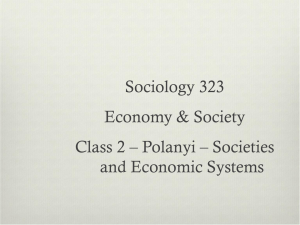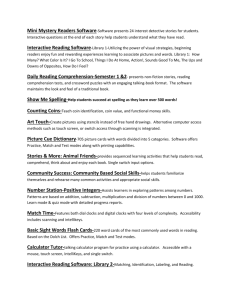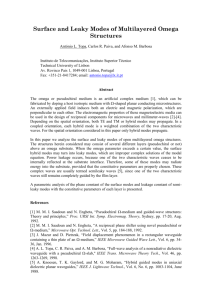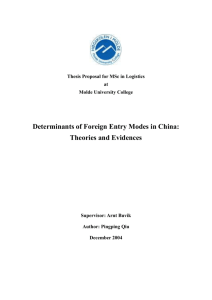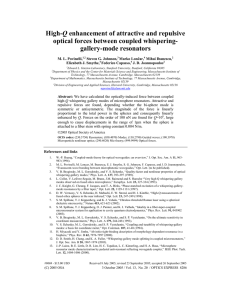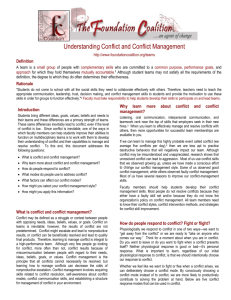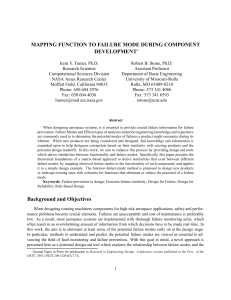Exchange and Consumption
advertisement
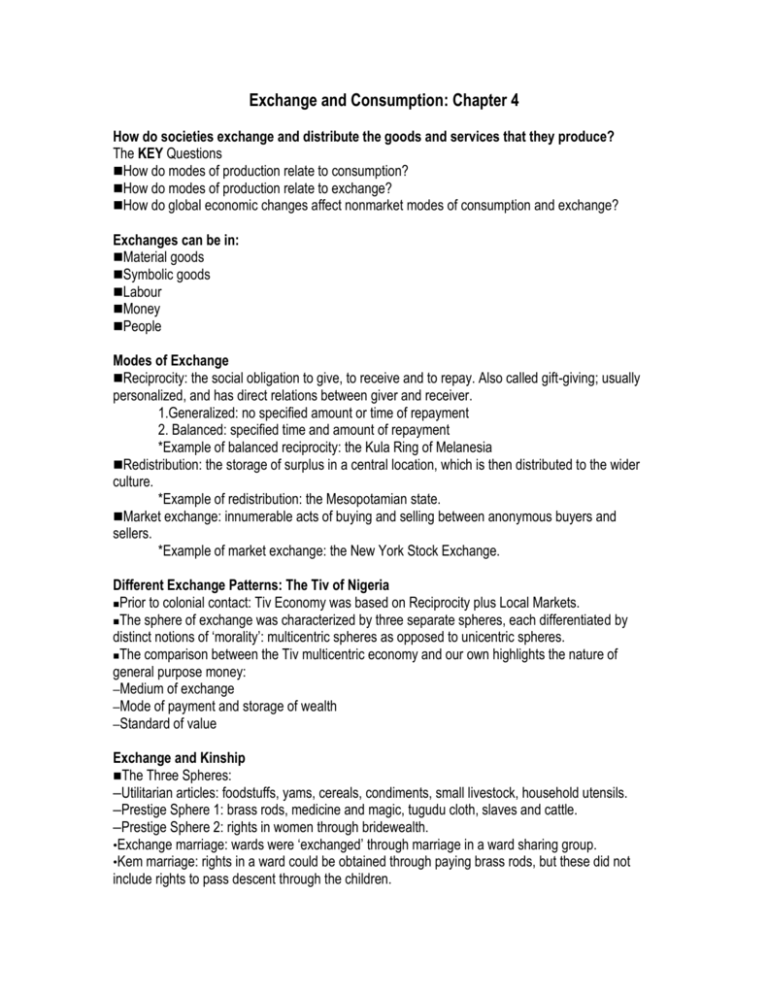
Exchange and Consumption: Chapter 4 How do societies exchange and distribute the goods and services that they produce? The KEY Questions How do modes of production relate to consumption? How do modes of production relate to exchange? How do global economic changes affect nonmarket modes of consumption and exchange? Exchanges can be in: Material goods Symbolic goods Labour Money People Modes of Exchange Reciprocity: the social obligation to give, to receive and to repay. Also called gift-giving; usually personalized, and has direct relations between giver and receiver. 1.Generalized: no specified amount or time of repayment 2. Balanced: specified time and amount of repayment *Example of balanced reciprocity: the Kula Ring of Melanesia Redistribution: the storage of surplus in a central location, which is then distributed to the wider culture. *Example of redistribution: the Mesopotamian state. Market exchange: innumerable acts of buying and selling between anonymous buyers and sellers. *Example of market exchange: the New York Stock Exchange. Different Exchange Patterns: The Tiv of Nigeria Prior to colonial contact: Tiv Economy was based on Reciprocity plus Local Markets. The sphere of exchange was characterized by three separate spheres, each differentiated by distinct notions of ‘morality’: multicentric spheres as opposed to unicentric spheres. The comparison between the Tiv multicentric economy and our own highlights the nature of general purpose money: –Medium of exchange –Mode of payment and storage of wealth –Standard of value Exchange and Kinship The Three Spheres: –Utilitarian articles: foodstuffs, yams, cereals, condiments, small livestock, household utensils. –Prestige Sphere 1: brass rods, medicine and magic, tugudu cloth, slaves and cattle. –Prestige Sphere 2: rights in women through bridewealth. •Exchange marriage: wards were ‘exchanged’ through marriage in a ward sharing group. •Kem marriage: rights in a ward could be obtained through paying brass rods, but these did not include rights to pass descent through the children. •Tiv adamantly maintained a separation between the logic of the market and that of kinship and marriage Modes of Production and Modes of Exchange In general, the modes of production are related to modes of exchange in the following ways: o hunting and gathering, horticulture and pastoralism are *generally* dominated by reciprocity. o Intensive agricultural societies, e.g. Mesopotamia, are *generally* dominated by redistribution, although long-distance trade and markets are also found here. o Industrial societies are *generally* dominated by market exchange. Thought Questions: 1. Can you think of areas of our lives that are still governed by gift-exchange? 2. Is a market economy moral, immoral or amoral?



